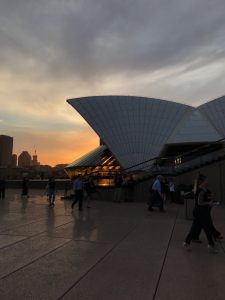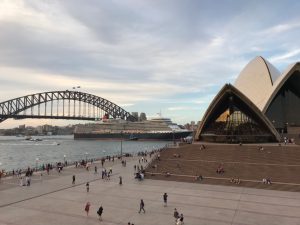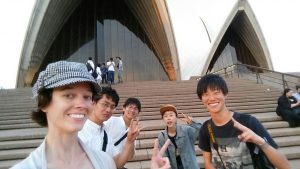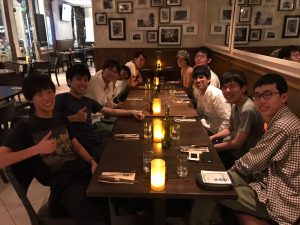General Report of the Australia Field Excursion Day Six (March 4, 2019)
Today we left Kialoa and traveled to Wollongong University. When we arrived we were treated to an Australian BBQ by the Student Union.

We met Helen McGregor, who uses coral to reconstruct past climate. Porites are the main species used, such as porites head corals and porites atolls. Modern corals can be used to reconstruct the climate from several hundred years ago to the present, and fossil corals can be used to reconstruct a several-hundred-year window sometime in the past. Corals can have very high resolution; up to weekly resolution is possible in some cases.
X-rays can be used to see the different density bands in coral, and luminescent lines are visible under UV light. The luminescent lines may reveal a humic/fluvic signal from river water. After Helen’s presentation, we were given a tour of the lab where she and her students process corals. We saw a very large coral sample from a microatoll in the Solomon Islands as well as coral samples under UV light. Helen’s student Jasmine showed us some X-rays of corals she was working on and a desktop scanning electron microscope.

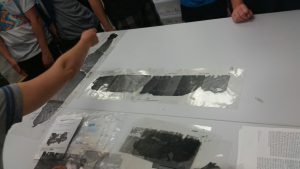
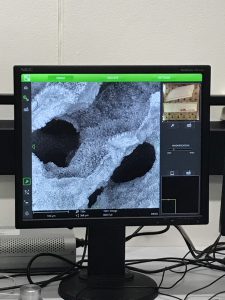
Coral d18O can reveal sea surface temperature (SST) and d18Oseawater. D18Oseawater can indicate what the hydrological cycle was like at that time. During Helen’s presentation, she showed us four graphs of data from instrumental and coral records. She asked us to guess which one was the coral record, and it was very difficult to tell. The coral records matched up perfectly with the instrumental records.
Helen’s student Patrick is working on corals spanning 4.4 ka to 4.2 ka. DO18 shows muted ENSO variations. At this time, the 4.2 ka event, there was global mega-drought, civilization collapse, drought in India and China from monsoonal failure, and cooling (indicated by Sr/Ca isotope signals from corals). The Sr/Ca ratio was combined with the d18O to reconstruct the rainfall signal of this area. Another of Helen’s students, Ariella, has a project to reconstruct the birth and growth of the Great Barrier Reef since its inception.
Our last tour was to see the Kiel Carbonate device, which had arrived only recently and had not yet been used. This device can extract oxygen and carbon which can then be analyzed by the mass spectrometer. This mass spectrometer could also be used to analyze nitrogen, but a different extraction process would be necessary. Helen said they are considering naming the Kiel machine “Jaws”. Jaws was a character in a James Bond movie, and the actor who played him is named Richard Kiel.
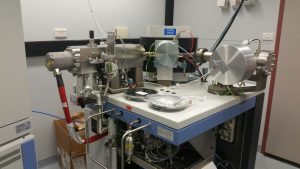
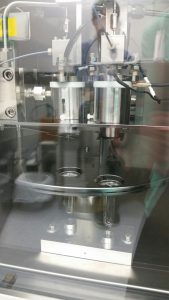
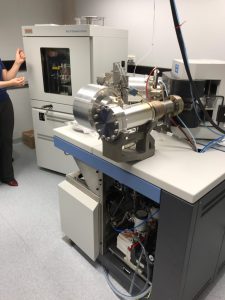
On our way to and from the different lab tours we passed through a rock display room. We saw very large Ikaites, reminding us of what John taught us on the beach. We also saw a Hobbit – homo floresiensis – an early hominid species.

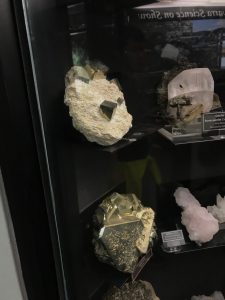

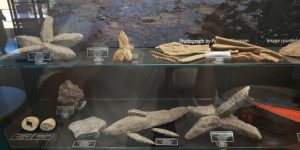
We then left Wollongong University and drove to Sydney. Shortly after arriving at the hotel we walked to the Sydney Opera House. It is a beautiful piece of architecture. After taking many pictures and watching a few cruise ships go by we went out for Australian steaks! The waiter found it a bit funny that almost everybody ordered a steak in our group. It was delicious, and a wonderful introduction to the city of Sydney.
